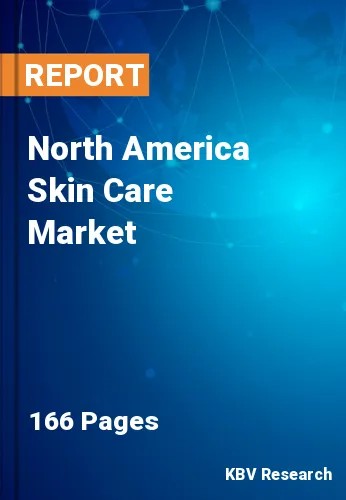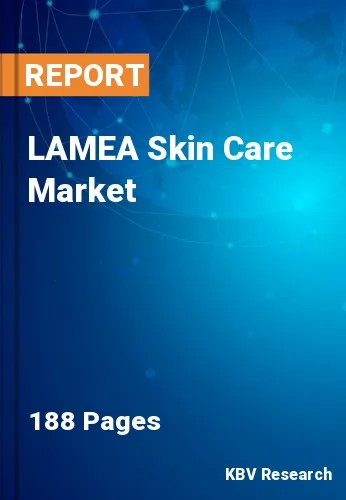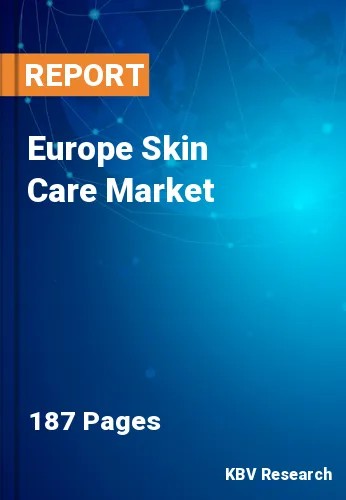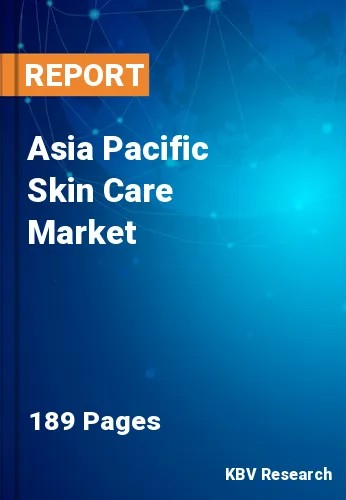The Skin Care Market is Predict to reach $244.8 Billion by 2030, at a CAGR of 6.2%
Special Offering :
Industry Insights | Market Trends | Highest number of Tables | 24/7 Analyst Support
Skin Care Market Growth, Trends and Report Highlights
According to a new report, published by KBV research, The Global Skin Care Market size is expected to reach $244.8 billion by 2030, rising at a market growth of 6.2% CAGR during the forecast period. In the year 2022, the market attained a volume of 13,507.5 million units, experiencing a growth of 6.2% (2019-2022).
The Female segment dominated the Global Skin Care Market by Gender in 2022; thereby, achieving a market value of $173.0 billion by 2030. Women, on average, are more likely to prioritize self-care and skincare as part of their overall wellness routines. This cultural shift toward self-care has led to increased spending on skincare products. Societal beauty standards and expectations often impact women more significantly than men, leading to a higher interest in skincare and beauty products to meet these standards. Women, particularly those in their 30s and beyond, often seek skincare products to address aging concerns, such as fine lines, wrinkles, and loss of skin elasticity. This drives the demand for anti-aging formulations.
The Bottles & Jars segment is exhibiting a CAGR of 6.4% during (2023 - 2030). Bottles & jars are often associated with premium and high-end skincare products. Using sophisticated and aesthetically pleasing bottle & jars designs can enhance the perceived value of the products, attracting consumers looking for luxury skincare experiences. Glass bottles and jars provide excellent protection against external elements like air and light, helping to preserve the efficacy of skincare formulations. This is crucial for products containing sensitive or active ingredients.
The Offline segment is leading the Global Skin Care Market by Distribution Channel in 2022; thereby, achieving a market value of $140.3 billion by 2030. Physical stores provide an opportunity for customers to experience skincare products firsthand. Consumers can touch, feel, and test products before purchasing, creating a more immersive and satisfying shopping experience. Physical stores offer opportunities for brands to establish a strong visual presence on shelves. Eye-catching packaging and effective in-store displays can attract customers' attention, potentially leading to increased sales. In-store promotions, trial-sized products, and sampling programs effectively encourage customers to try new skincare products.
The Cleansers & Face Wash segment is experiencing a CAGR of 6.6% during (2023 - 2030). Cleansing is a fundamental step in daily skincare routines. Face washes & cleansers are products that consumers use regularly, creating consistent demand and repeat purchases. Cleansers help remove impurities, makeup, pollutants, and excess oils from the skin. This is essential for preventing clogged pores, acne, and other skin issues, contributing to overall skin health. Face washes are crucial in maintaining skin hygiene, which is especially important for preventing skin issues and maintaining a healthy complexion. This aspect has gained prominence, especially in the context of preventive skin care.
The Asia Pacific region dominated the Global Skin Care Market by Region in 2022, and would continue to be a dominant market till 2030; thereby, achieving a market value of $91.9 billion by 2030. The Europe region is anticipating a CAGR of 5.5% during (2023 - 2030). Additionally, The North America region would register a CAGR of 5.7% during (2023 - 2030).
Full Report: https://www.kbvresearch.com/skin-care-market/
The market research report has exhaustive quantitative insights providing a clear picture of the market potential in various segments across the globe with country wise analysis in each discussed region. The key impacting factors of the market have been discussed in the report with the elaborated company profiles of The Colgate Palmolive Company, The Procter & Gamble Company (P&G), Johnson & Johnson, Unilever PLC, The Estee Lauder Companies, Inc., Shiseido Company Limited, Kao Corporation, Avon Products, Inc. (Natura & Co Holding SA), Revlon, Inc. (MacAndrews & Forbes), L'Oréal S.A.
Global Skin Care Market Segmentation
By Gender (Volume, Million Units, USD Billion, 2019 to 2030)
- Female
- Male
By Packaging (Volume, Million Units, USD Billion, 2019 to 2030)
- Tubes
- Bottles & Jars
- Others
By Distribution Channel (Volume, Million Units, USD Billion, 2019 to 2030)
- Offline
- Online
By Product Type (Volume, Million Units, USD Billion, 2019 to 2030)
- Creams & Moisturizers
- Cleansers & Face Wash
- Powder
- Others
By Geography (Volume, Million Units, USD Billion, 2019 to 2030)
- North America
- US
- Canada
- Mexico
- Rest of North America
- Europe
- Germany
- UK
- France
- Russia
- Spain
- Italy
- Rest of Europe
- Asia Pacific
- China
- Japan
- India
- South Korea
- Singapore
- Malaysia
- Rest of Asia Pacific
- LAMEA
- Brazil
- Argentina
- UAE
- Saudi Arabia
- South Africa
- Nigeria
- Rest of LAMEA
Companies Profiled
- The Colgate Palmolive Company
- The Procter & Gamble Company (P&G)
- Johnson & Johnson
- Unilever PLC
- The Estee Lauder Companies, Inc.
- Shiseido Company Limited
- Kao Corporation
- Avon Products, Inc. (Natura & Co Holding SA)
- Revlon, Inc. (MacAndrews & Forbes)
- L'Oréal S.A.
Related Reports:



